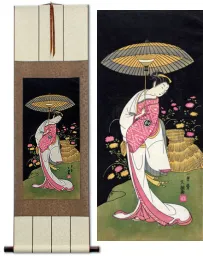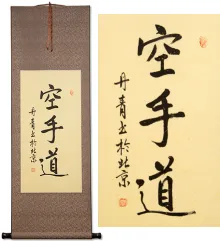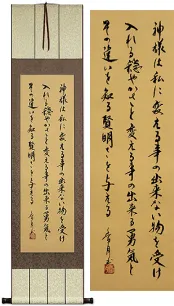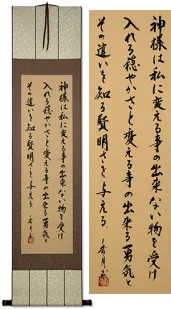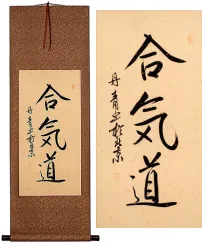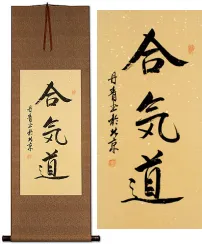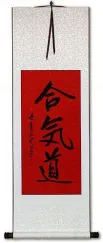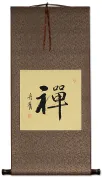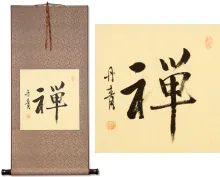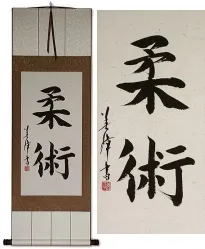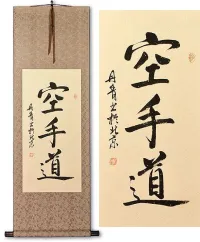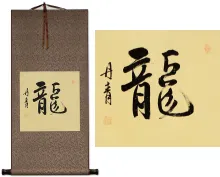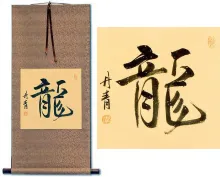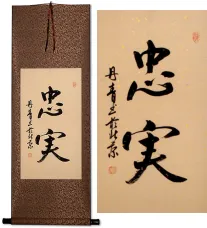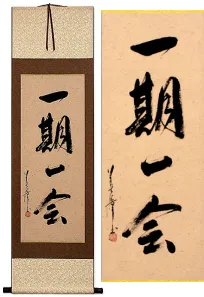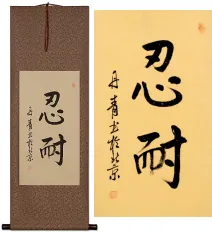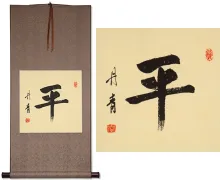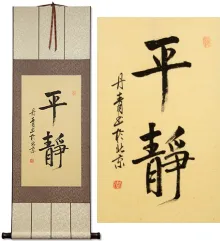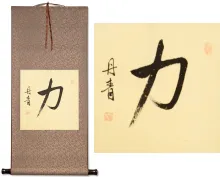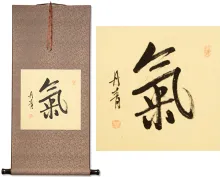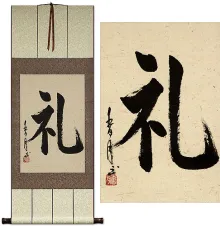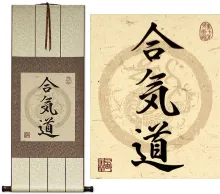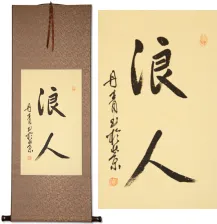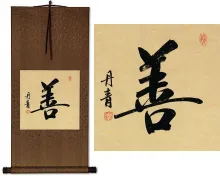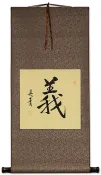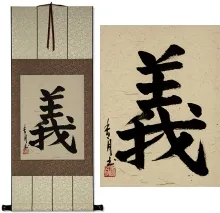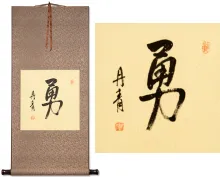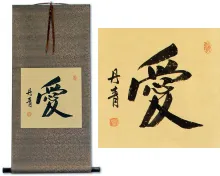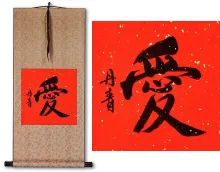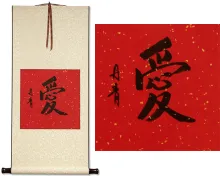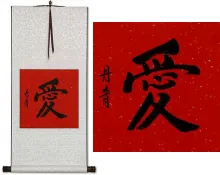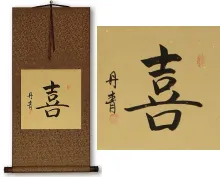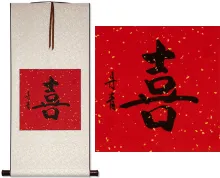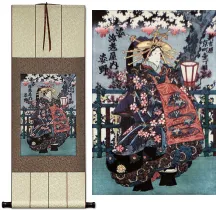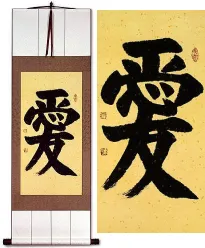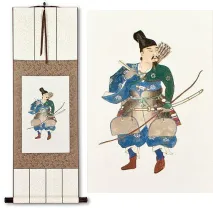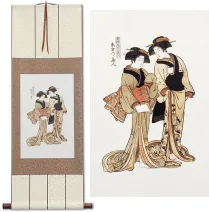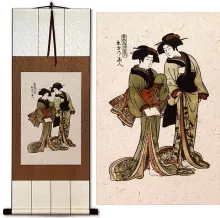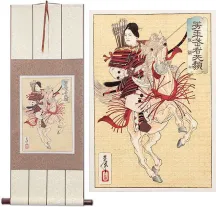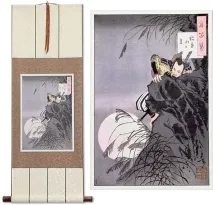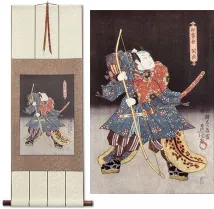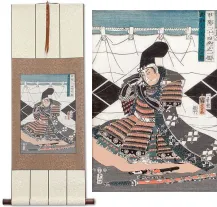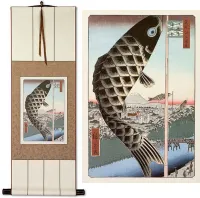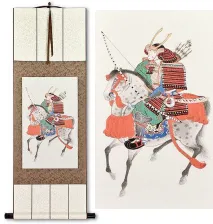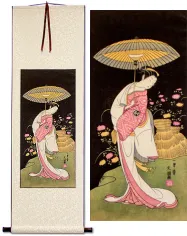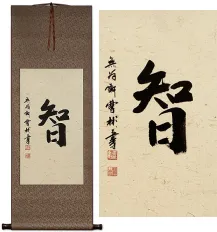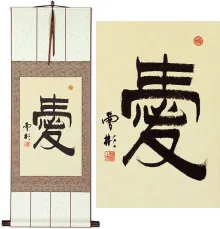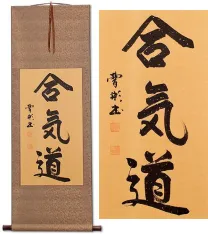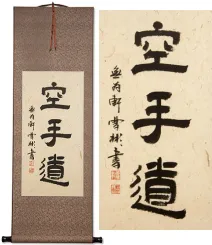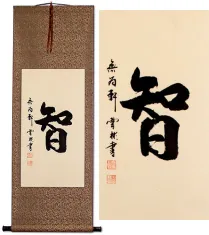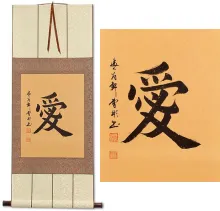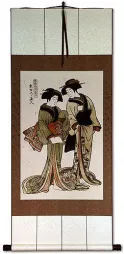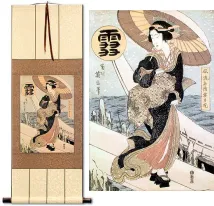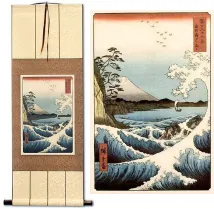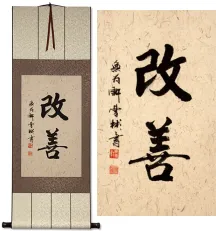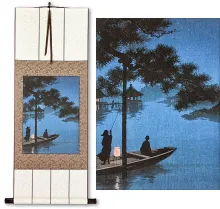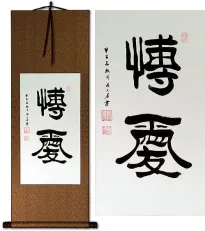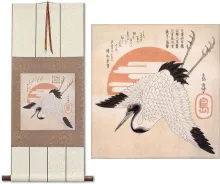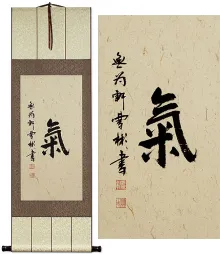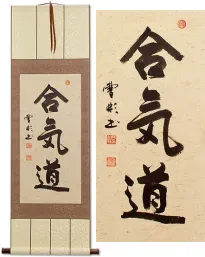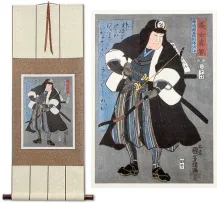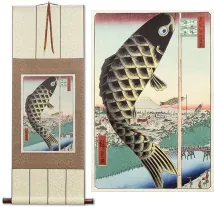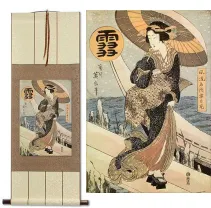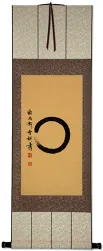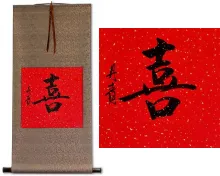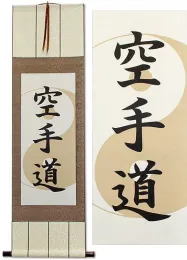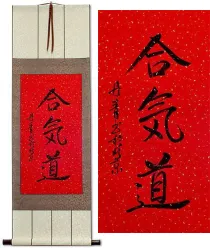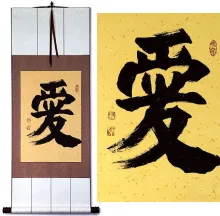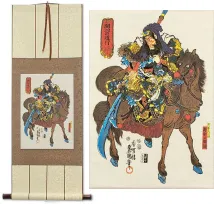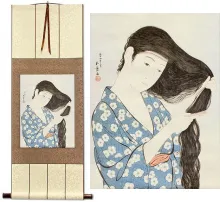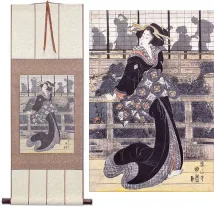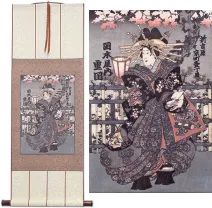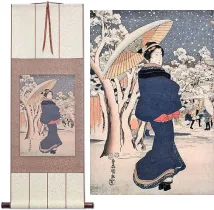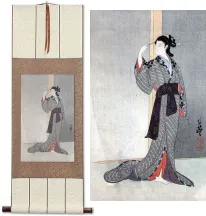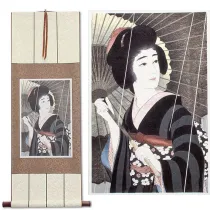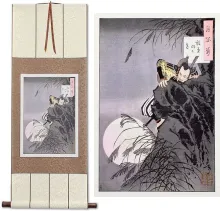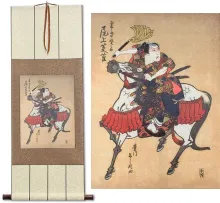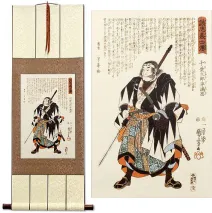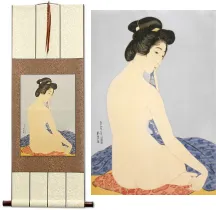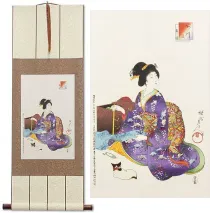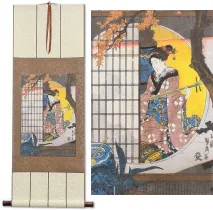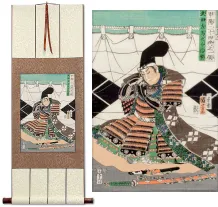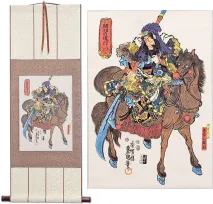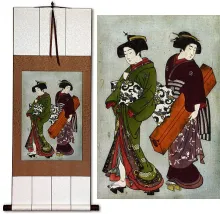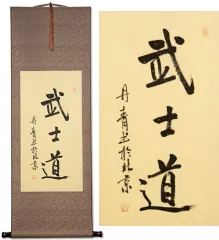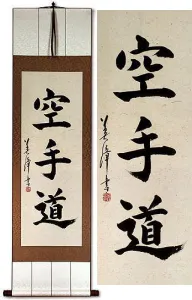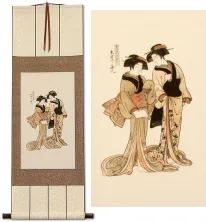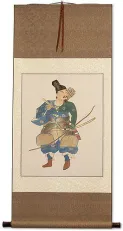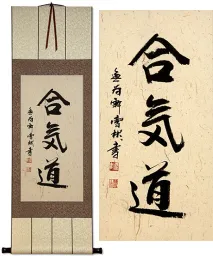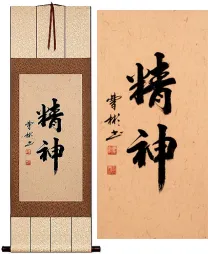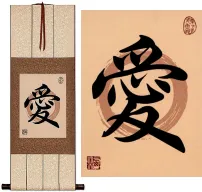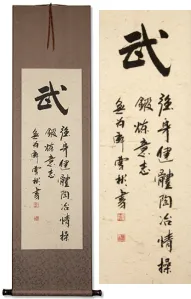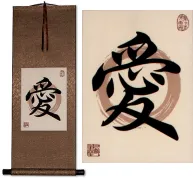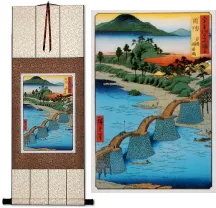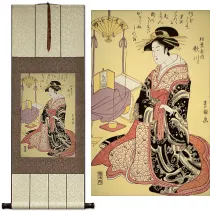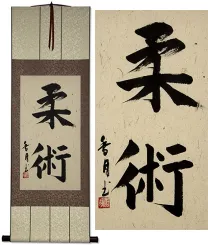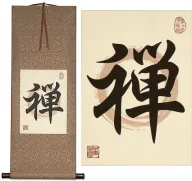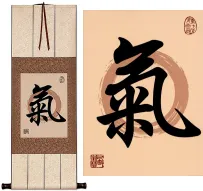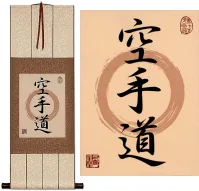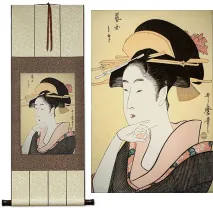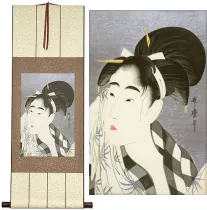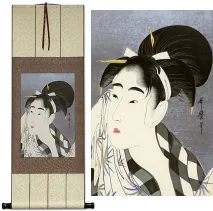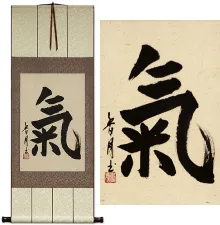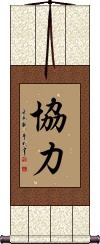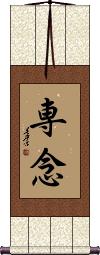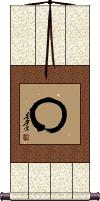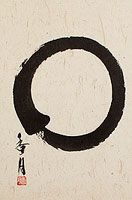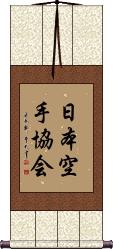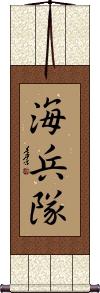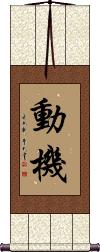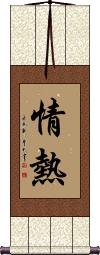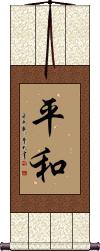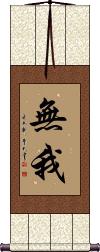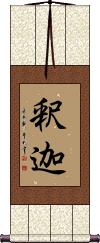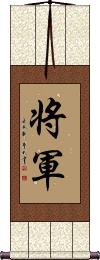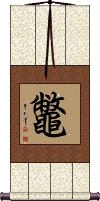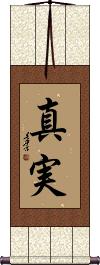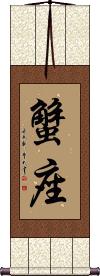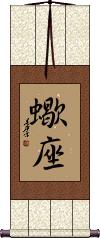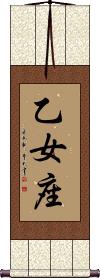We have 215 Japanese scrolls, ready to ship to you right now.
| Narrow Results By: |
| Narrow Results By: |
$20 to $30 (4) |
Bishou Imai (4) |
< 16" (110) |
31" to 35" (28) |
Birds & Flowers (1) |
Sort By... Price:Width: Height: |
Japanese Scrolls for Sale
Gallery Price: $117.00
Your Price: $64.88
Gallery Price: $240.00
Your Price: $132.88
Gallery Price: $240.00
Your Price: $132.88
Gallery Price: $87.00
Your Price: $47.88
Gallery Price: $200.00
Your Price: $118.88
Gallery Price: $200.00
Your Price: $98.88
Gallery Price: $72.00
Your Price: $39.77
Gallery Price: $200.00
Your Price: $122.88
Gallery Price: $200.00
Your Price: $118.88
Gallery Price: $200.00
Your Price: $122.88
Gallery Price: $72.00
Your Price: $39.88
Gallery Price: $268.00
Your Price: $148.77
Gallery Price: $200.00
Your Price: $118.88
Gallery Price: $65.00
Your Price: $39.88
Gallery Price: $79.00
Your Price: $43.77
Gallery Price: $202.00
Your Price: $111.88
Gallery Price: $268.00
Your Price: $148.77
Gallery Price: $79.00
Your Price: $43.88
Gallery Price: $65.00
Your Price: $39.88
Gallery Price: $103.00
Your Price: $56.88
Gallery Price: $65.00
Your Price: $39.77
Gallery Price: $72.00
Your Price: $39.88
Gallery Price: $65.00
Your Price: $39.00
Gallery Price: $65.00
Your Price: $39.88
Gallery Price: $106.00
Your Price: $58.88
Gallery Price: $79.00
Your Price: $43.88
Gallery Price: $79.00
Your Price: $43.88
Gallery Price: $65.00
Your Price: $39.88
Gallery Price: $168.00
Your Price: $92.88
Gallery Price: $65.00
Your Price: $39.88
Gallery Price: $65.00
Your Price: $39.88
Gallery Price: $200.00
Your Price: $109.88
Gallery Price: $65.00
Your Price: $39.88
Gallery Price: $79.00
Your Price: $43.88
Gallery Price: $65.00
Your Price: $39.88
Gallery Price: $65.00
Your Price: $39.88
Gallery Price: $65.00
Your Price: $39.88
Gallery Price: $65.00
Your Price: $39.88
Gallery Price: $140.00
Your Price: $89.77
Gallery Price: $65.00
Your Price: $39.88
Gallery Price: $65.00
Your Price: $39.88
Gallery Price: $65.00
Your Price: $39.88
Gallery Price: $44.00
Your Price: $24.00
Gallery Price: $47.00
Your Price: $26.00
Beauties Of The East Japanese Woodblock Repro Print Wall Scroll
Discounted Blemished
Gallery Price: $87.50
Your Price: $49.00
Gallery Price: $108.00
Your Price: $59.88
Gallery Price: $117.00
Your Price: $64.88
Gallery Price: $108.00
Your Price: $59.88
Gallery Price: $108.00
Your Price: $59.88
Gallery Price: $90.00
Your Price: $49.88
Gallery Price: $108.00
Your Price: $59.88
Gallery Price: $108.00
Your Price: $59.88
Gallery Price: $222.00
Sold Out $122.88
More Coming Soon!Gallery Price: $99.00
Your Price: $54.88
Gallery Price: $150.00
Your Price: $78.88
Gallery Price: $200.00
Your Price: $98.88
Gallery Price: $150.00
Your Price: $78.88
Gallery Price: $200.00
Your Price: $118.88
Gallery Price: $90.00
Your Price: $49.88
Gallery Price: $108.00
Your Price: $59.88
Gallery Price: $70.00
Your Price: $29.00
Gallery Price: $144.00
Your Price: $79.88
Gallery Price: $90.00
Your Price: $49.88
Gallery Price: $108.00
Your Price: $59.88
Gallery Price: $108.00
Your Price: $59.88
Gallery Price: $108.00
Your Price: $59.88
Gallery Price: $200.00
Your Price: $69.88
Gallery Price: $96.00
Your Price: $52.88
Gallery Price: $106.00
Your Price: $58.77
Gallery Price: $150.00
Your Price: $98.88
Gallery Price: $150.00
Your Price: $98.88
Gallery Price: $108.00
Your Price: $59.88
Gallery Price: $108.00
Your Price: $59.88
Gallery Price: $108.00
Your Price: $59.88
Gallery Price: $108.00
Your Price: $59.88
Gallery Price: $65.00
Your Price: $39.88
Gallery Price: $103.00
Your Price: $56.88
Gallery Price: $108.00
Your Price: $59.88
Gallery Price: $140.00
Your Price: $89.77
Gallery Price: $150.00
Your Price: $98.88
Gallery Price: $108.00
Your Price: $59.88
Gallery Price: $108.00
Your Price: $59.88
Gallery Price: $108.00
Your Price: $59.88
Gallery Price: $108.00
Your Price: $59.88
Gallery Price: $108.00
Your Price: $59.88
Gallery Price: $108.00
Your Price: $59.88
Gallery Price: $108.00
Your Price: $59.88
Gallery Price: $108.00
Your Price: $59.88
Gallery Price: $108.00
Your Price: $59.88
Gallery Price: $108.00
Your Price: $59.88
Gallery Price: $108.00
Your Price: $59.88
Gallery Price: $108.00
Your Price: $59.88
Gallery Price: $108.00
Your Price: $59.88
Gallery Price: $108.00
Your Price: $59.88
Gallery Price: $108.00
Your Price: $59.88
Gallery Price: $108.00
Your Price: $59.88
Gallery Price: $200.00
Your Price: $124.88
Gallery Price: $108.00
Your Price: $59.88
Gallery Price: $108.00
Your Price: $59.88
Gallery Price: $87.00
Your Price: $47.88
Gallery Price: $87.00
Your Price: $47.88
Gallery Price: $79.00
Your Price: $43.88
Gallery Price: $268.00
Your Price: $148.77
Gallery Price: $79.00
Your Price: $43.88
Gallery Price: $90.00
Your Price: $49.88
Gallery Price: $200.00
Your Price: $79.88
Gallery Price: $150.00
Your Price: $82.88
Gallery Price: $108.00
Your Price: $59.88
Gallery Price: $65.00
Your Price: $39.88
Gallery Price: $200.00
Your Price: $98.88
Gallery Price: $200.00
Your Price: $111.88
Gallery Price: $158.00
Your Price: $87.77
Gallery Price: $108.00
Your Price: $59.88
Gallery Price: $108.00
Your Price: $59.88
Gallery Price: $108.00
Your Price: $59.88
Gallery Price: $200.00
Your Price: $111.88
Gallery Price: $90.00
Your Price: $49.88
Gallery Price: $90.00
Your Price: $49.88
Gallery Price: $90.00
Your Price: $49.88
Gallery Price: $108.00
Your Price: $59.88
Gallery Price: $108.00
Your Price: $59.88
Gallery Price: $108.00
Your Price: $59.88
Gallery Price: $300.00
Your Price: $109.88
